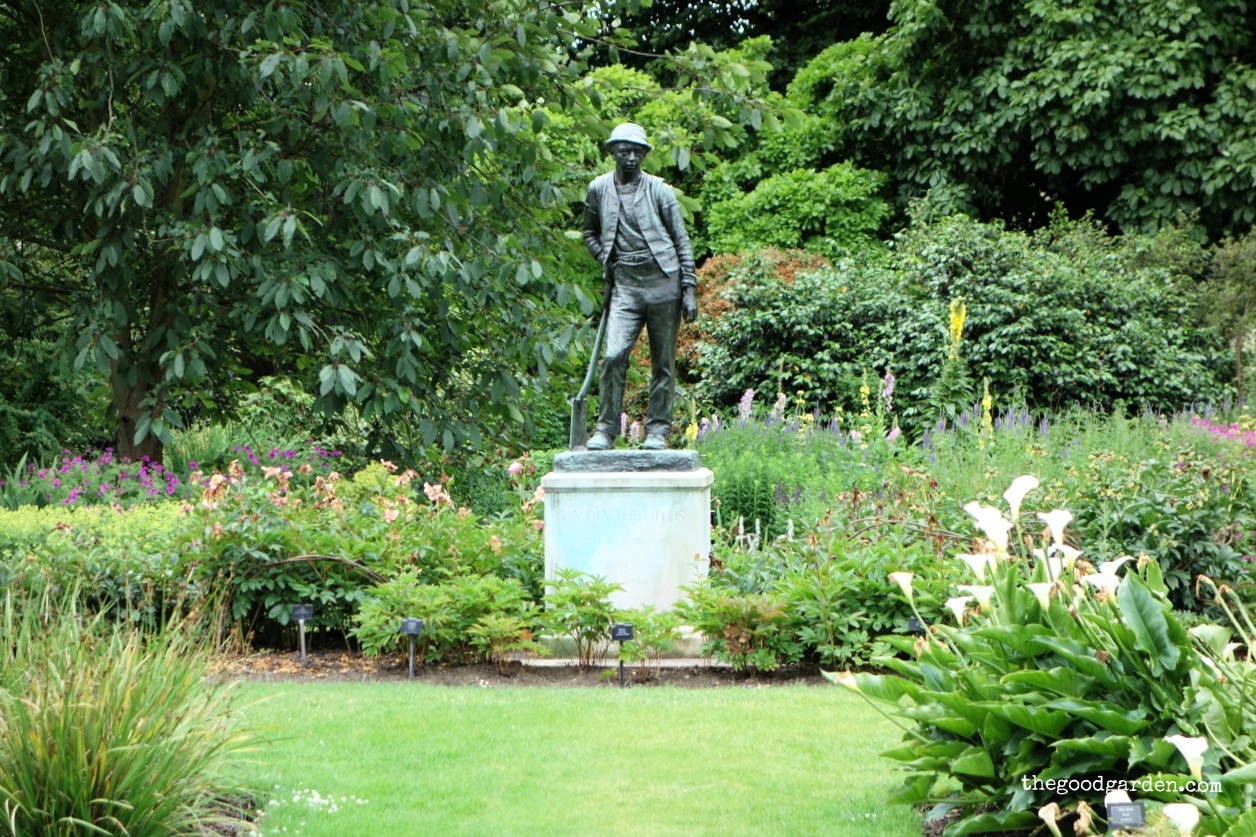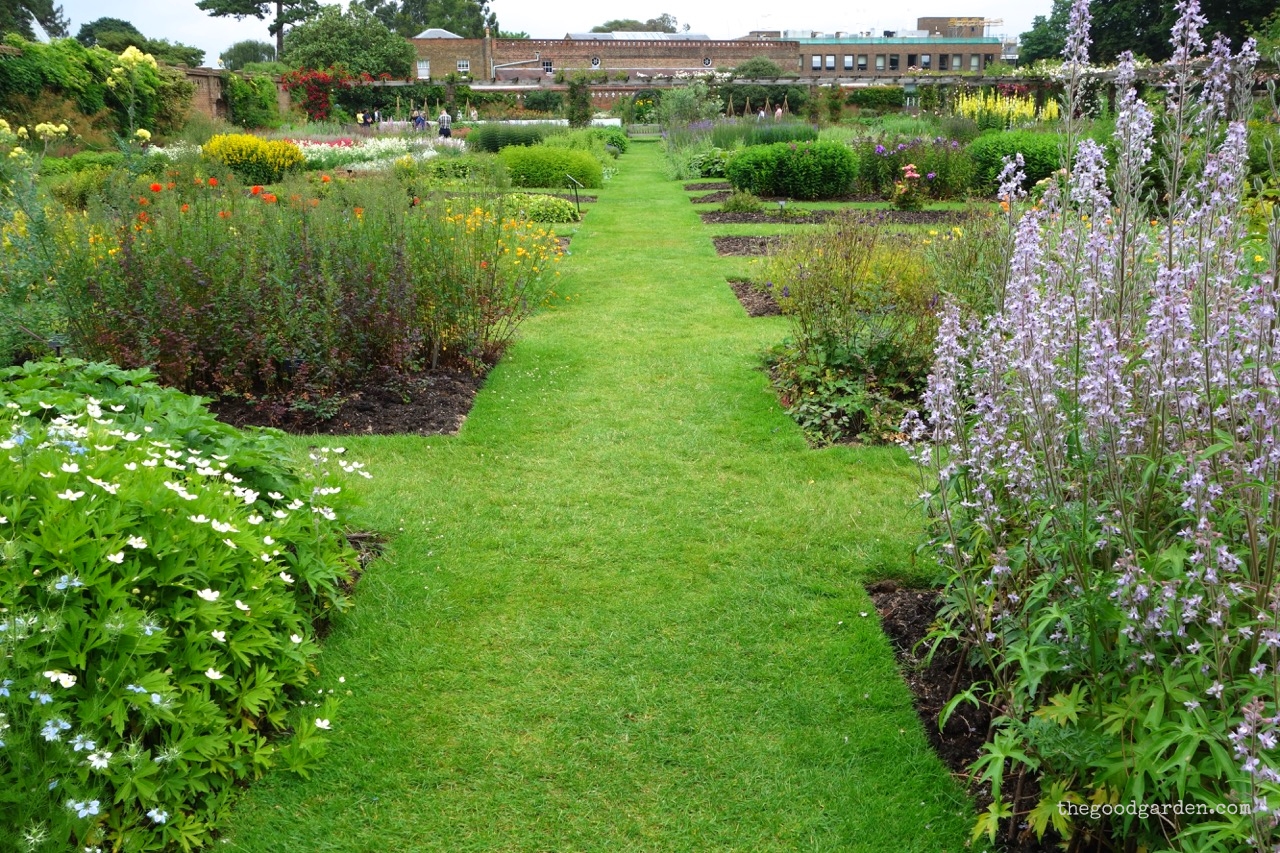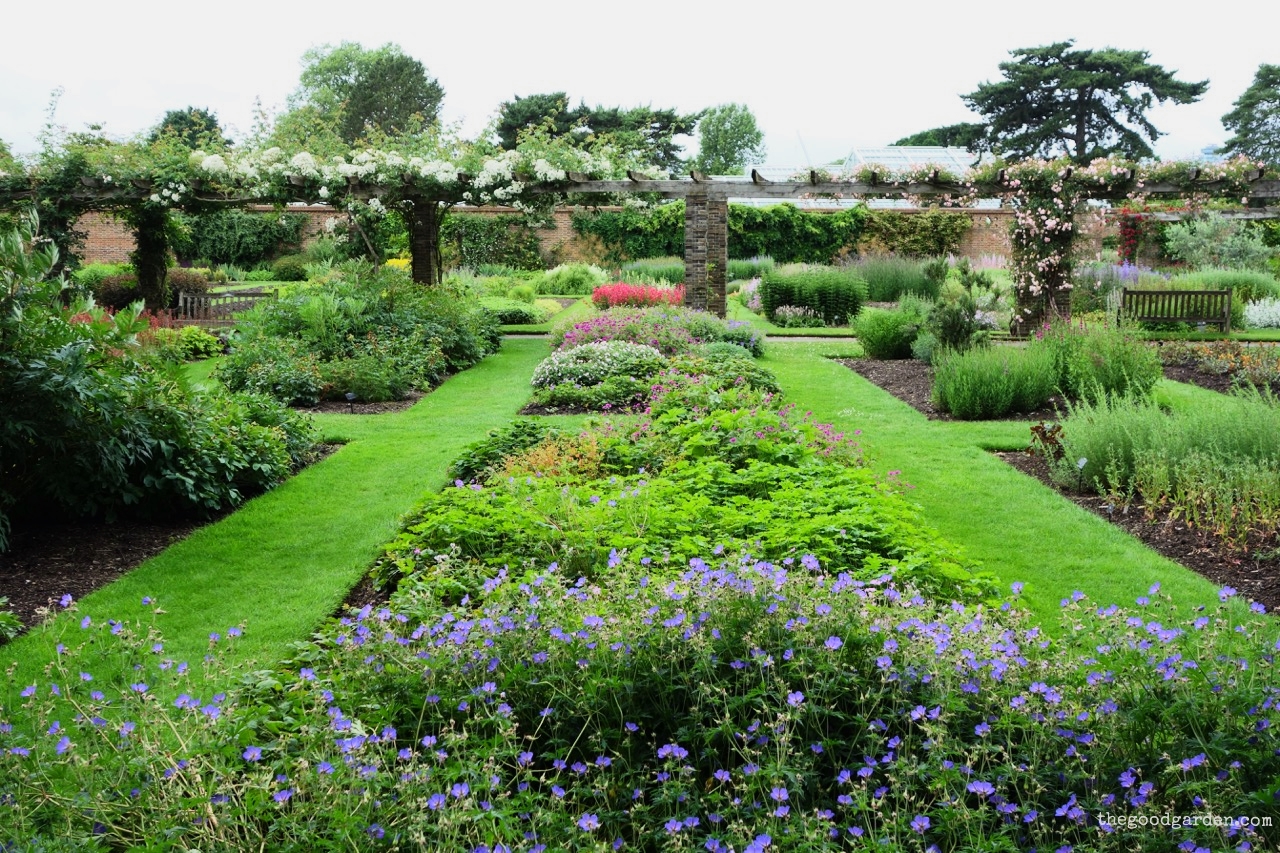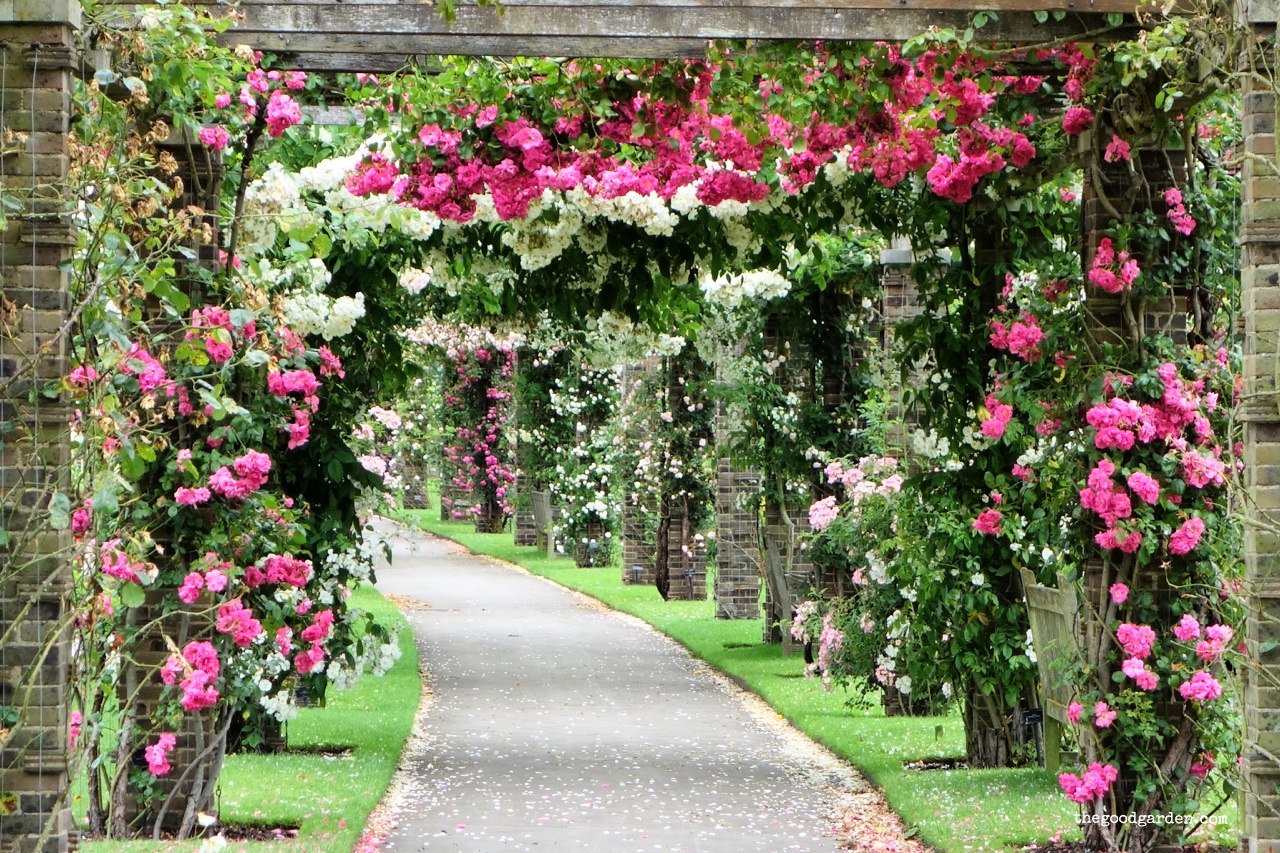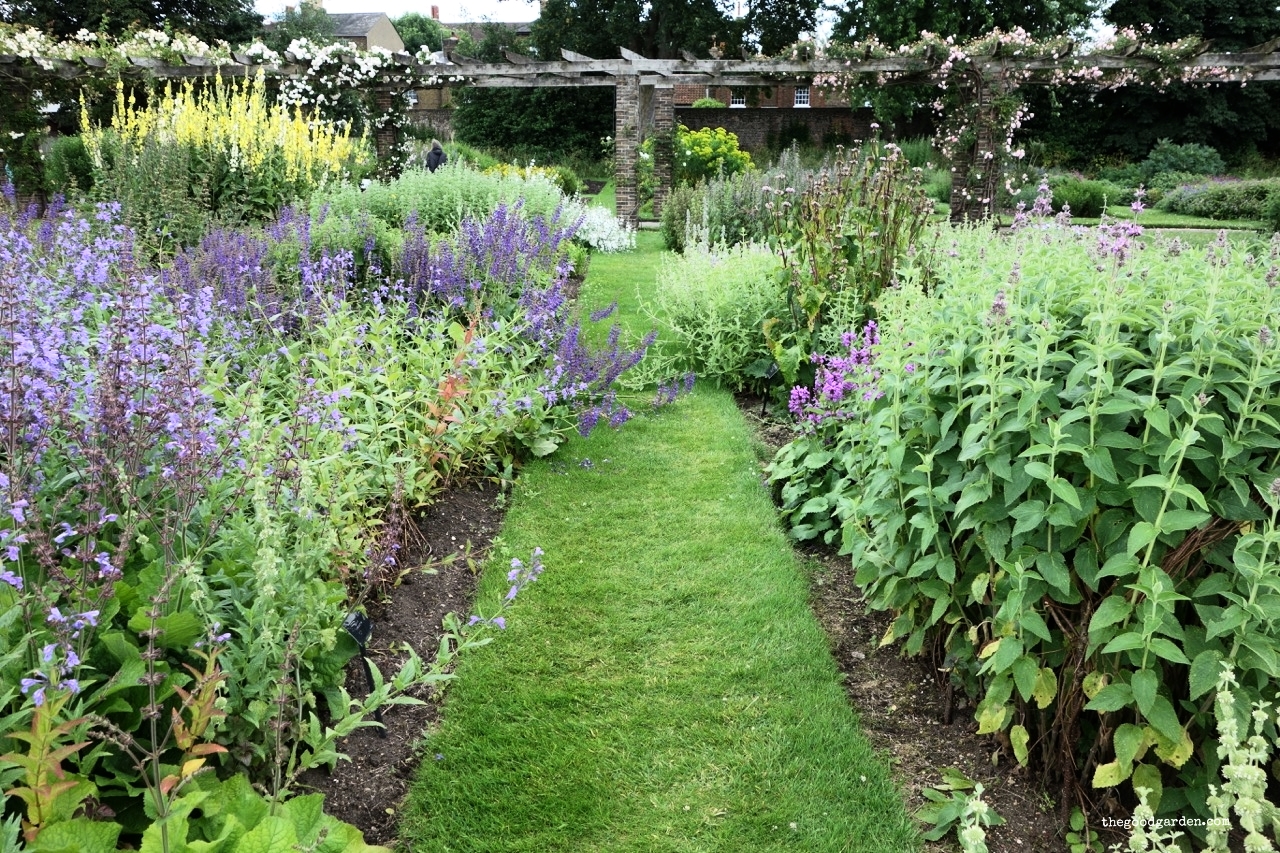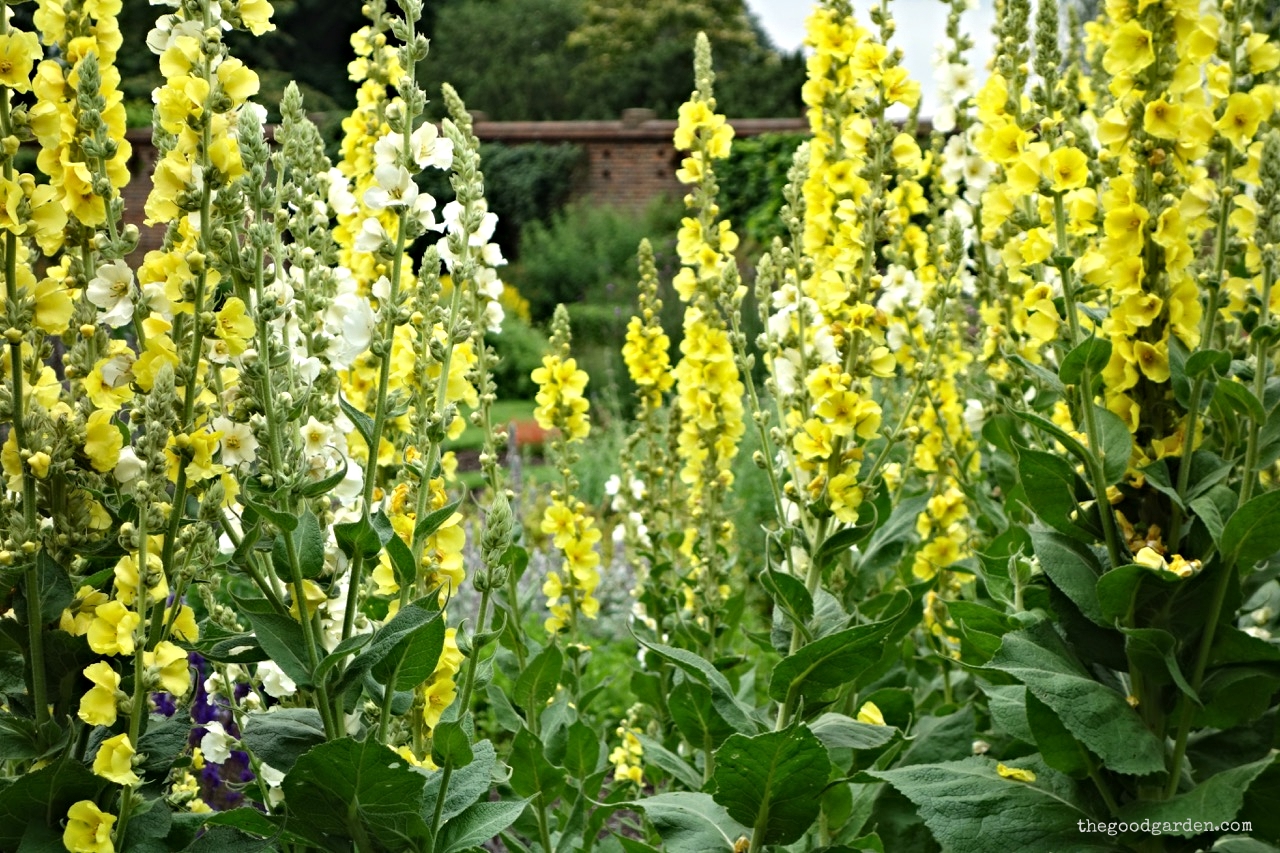The world famous Royal Botanic Gardens at Kew are full of picturesque sections: Woodland Glade, Japanese Gateway, Rhododendrun Dell. After walking through these, it is a surprise to stumble into the area called the “Plant Family Beds.” Tall brick walls are punctuated by a few openings. Inside the garden feels private and isolated, like another world. It is laid out to maximize cultivated areas with mown grass aisles to provide access to these areas.
A plaque in the garden explains what plant names tell us.
Designers usually put great effort into combining form, texture, and color into create cohesive visual compositions. But plants in this garden are arranged based on their evolutionary relationship to each other - so that many plants from the same “family” can be experienced together. Like a family reunion for plants! For botanists this arrangement provides a living library to further research. For everyday plant lovers it provides a chance to see plants at their full potential, to notice similarities and differences across members of the same family. To me it also opens a window into the history of the study of plants; it brings to mind the golden age of botany; and it teaches us about the evolution of our planet.
In the 1700’s scientists realized the need to develop an informative and universal classification system. Because plant names varied by region, it was critical to ensure consistency so that research could reliably be shared across borders. In the mid 1700’s, scientist Carolus Linnaeus promoted a system based on the way plants reproduced. Names were based on the number and location of stamens and pistils. In the late 1700’s, French botanist Antoine Laurent de Jussieu made improvements by using additional plant characteristics. Today, advances in DNA analysis give us even better information regarding a plant’s evolutionary origin.
William Hooker, the first director of the Royal Botanic Garden at Kew and the designer of the Plant Family Beds. Source: Encyclopedia Britannica
William Hooker, first director of Kew, designed the Plant Family Beds in 1846 using the work of Antoine Laurent. In 1869, the layout was updated to reflect further developments. The gardens have continued to evolve and have been updated using the latest DNA-based learnings. Today there are over 100 beds and 90 plant families. It is easy to get lost in this living library: to enjoy each specimen and to experience new variations.
At one end sits a wonderful bronze statue, a tribute to all gardeners. The spectacular rose arbor that cuts through the middle of the space was installed in 1959 to celebrate the garden’s anniversary. Because the roses have been selected for the quantity and duration of their bloom, it is hard to describe the sensual overload of being surrounded by their scent and color.
I am not sure that I will be arranging plants in my garden based on their scientific grouping, but I probably spent most of my time at Kew exploring this garden. It is both beautiful and informative: a living library that celebrates the diversity that can occur even in the same family; a product of centuries of accumulated knowledge; and a reminder of the longer evolutionary arc on which we all travel.

